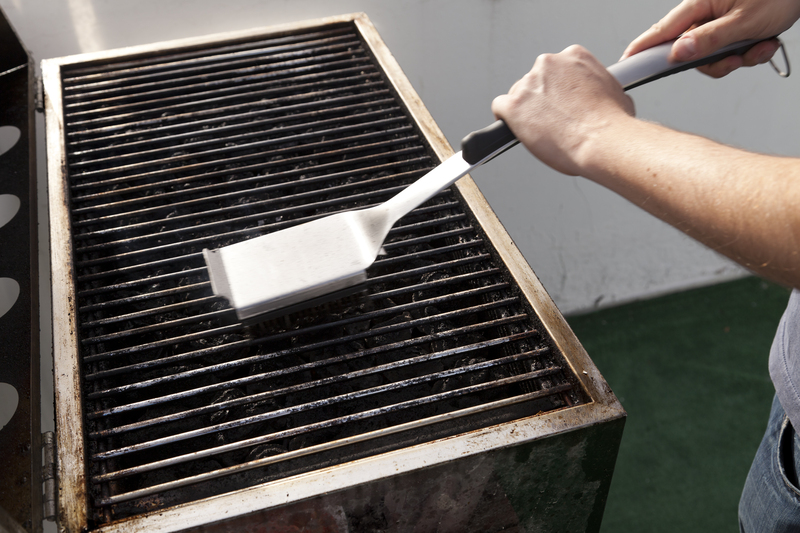Thoroughly Clean Your Kettle's Interior
Posted on 29/07/2024
A kettle is an essential appliance in many households, commonly used for boiling water for tea, coffee, and other beverages. However, frequent use can lead to the accumulation of mineral deposits, especially in areas with hard water. Thoroughly cleaning your kettle's interior is crucial for maintaining its efficiency and ensuring the purity of your boiled water. In this article, we'll explore various methods to clean your kettle and offer tips for regular maintenance.
Understanding the Importance of Cleaning
When you boil water repeatedly, mineral deposits from hard water build up inside the kettle. These deposits, primarily composed of calcium and magnesium, not only affect the taste of your water but can also reduce the kettle's efficiency and lifespan. Regular cleaning ensures that your kettle functions well and that the water you use is safe for consumption.

Essential Cleaning Methods
There are several effective methods to clean your kettle's interior. Each method offers benefits and can be chosen based on the materials you have at hand.
Using Vinegar and Water
A mixture of vinegar and water is a tried-and-true method for cleaning kettles. Here's how to do it:
1. Mix equal parts of white vinegar and water, enough to fill the kettle half or three-quarters of the way.
2. Boil the mixture in the kettle and let it sit for 15-20 minutes.
3. Pour out the solution and rinse the kettle thoroughly with cold water.
4. Boil fresh water in the kettle once or twice to remove any vinegar residue before using it again.
Using Lemon and Water
If you prefer a more natural scent, lemon works wonders:
1. Cut a lemon into slices and add them to the kettle.
2. Fill the kettle with water and boil it.
3. Let the lemon-water mixture sit for an hour.
4. Discard the contents and rinse the kettle thoroughly with water.
5. Boil plain water once to eliminate any remaining lemon scent.
Baking Soda Solution
Baking soda is another excellent cleaning agent:
1. Add one teaspoon of baking soda to a full kettle of water.
2. Boil the mixture and let it sit for 20 minutes.
3. Pour out the solution and scrub the interior with a non-abrasive brush if needed.
4. Rinse the kettle thoroughly with water and boil fresh water to ensure no residue remains.
Descaling Solutions
Commercial descaling solutions are designed to remove mineral deposits safely:
1. Follow the manufacturer's instructions for diluting the descaling solution in water.
2. Fill your kettle with the solution and boil.
3. Let it sit for the recommended period before discarding the solution.
4. Rinse the kettle thoroughly with water and boil fresh water to remove any chemical residue.
Maintenance Tips
Regular maintenance can prevent heavy build-up and extend the life of your kettle. Here are some tips:
1. Regular Cleaning: Aim to clean your kettle once a month if you use it frequently.
2. Use Filtered Water: Use filtered or bottled water to reduce mineral deposits.
3. Empty the Kettle After Use: Always empty your kettle after use to prevent standing water from causing build-up.
4. Wipe Down the Exterior: Wipe the exterior of your kettle regularly to prevent stains and keep it looking new.
Pros and Cons
Pros
- Enhanced Taste: Removes mineral deposits that affect the taste of water.
- Extended Appliance Life: Regular cleaning prevents damage and prolongs the kettle's lifespan.
- Improved Efficiency: A clean kettle boils water faster, saving energy.
- Safe Consumption: Ensures that boiled water is free from impurities.
Cons
- Time-Consuming: The cleaning process can be time-consuming, especially when using natural methods.
- Vinegar Odor: The smell of vinegar may linger if not rinsed thoroughly.
- Wear and Tear: Over-cleaning with abrasive materials can damage the kettle's interior.

Takeaways
1. Clean your kettle regularly to maintain water quality and appliance efficiency.
2. Utilize natural cleaning agents like vinegar, lemon, or baking soda for effective results.
3. Follow safety guidelines when using commercial descaling solutions.
4. Prevent build-up by using filtered water and emptying the kettle after each use.
Conclusion
Thoroughly cleaning your kettle's interior is essential for ensuring the purity of your boiled water and maintaining the appliance's efficiency. By using simple household items like vinegar, lemon, and baking soda, you can easily remove mineral deposits and keep your kettle in top condition. Regular maintenance and following the tips provided will help you enjoy better-tasting beverages and extend the life of your kettle. Make it a habit to clean your kettle at least once a month, and you'll reap the benefits of cleaner water and a more efficient appliance.






